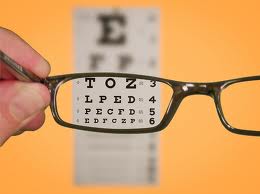CORRECTING NEARSIGHTEDNESS WITH VISION CORRECTION SURGERY
 In order to understand how to correct nearsightedness, it’s best to first learn more about the problem. Around the world, nearsightedness is a common health issue. Otherwise known as myopia, nearsightedness is a condition defined as having a cornea with too much curvature – as a result, improperly bending incoming light and causing blurred vision. Nearsightedness is usually genetically inherited and begins to appear during childhood.
In order to understand how to correct nearsightedness, it’s best to first learn more about the problem. Around the world, nearsightedness is a common health issue. Otherwise known as myopia, nearsightedness is a condition defined as having a cornea with too much curvature – as a result, improperly bending incoming light and causing blurred vision. Nearsightedness is usually genetically inherited and begins to appear during childhood.
Some of the symptoms of nearsightedness include headaches, eyestrain, squinting, or fatigue during driving or physical activities. Those with nearsightedness can usually see close objects with clarity but not those that are far away. Fortunately, the condition is readily diagnosed using standard eye exams. Nearsightedness can be treated by glasses, contacts, or vision correction surgery.
2 Procedures in Correcting Nearsightedness with Surgery:
- Photorefractive Keratectomy – Otherwise known as PRK, this surgery uses a laser to reshape the corneal surface. By flattening the cornea, light can be properly focused by the eye.
- Laser-Assisted in Situ Keratomileusis – Commonly known as LASIK, this surgery also uses a laser to create a flap on the top of the cornea. A laser then removes corneal tissue before the flap is set back into its original position. LASIK is currently the most common procedure for correcting nearsightedness.
Out of the surgical options currently available, LASIK is usually the most practical all-around solution. Recovery usually lasts no more than a few days.
Most patients receive 20/20 or better vision – according during recent studies, 98% of patients had 20/20 vision one year after the procedure!
